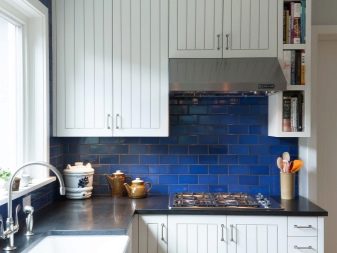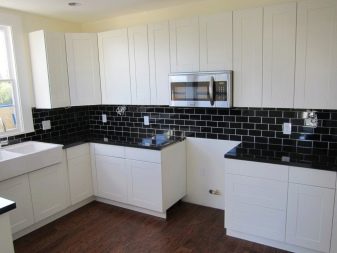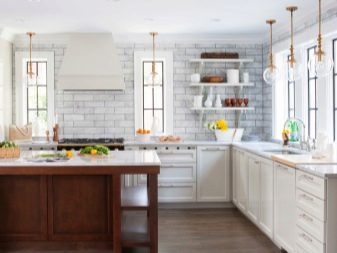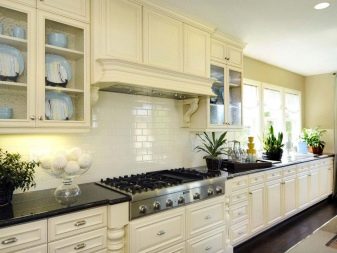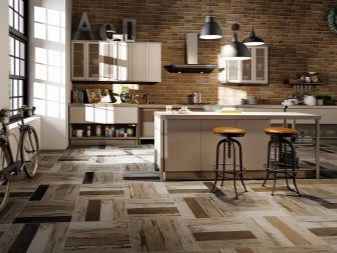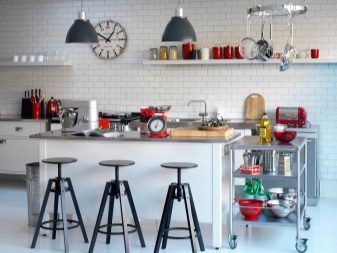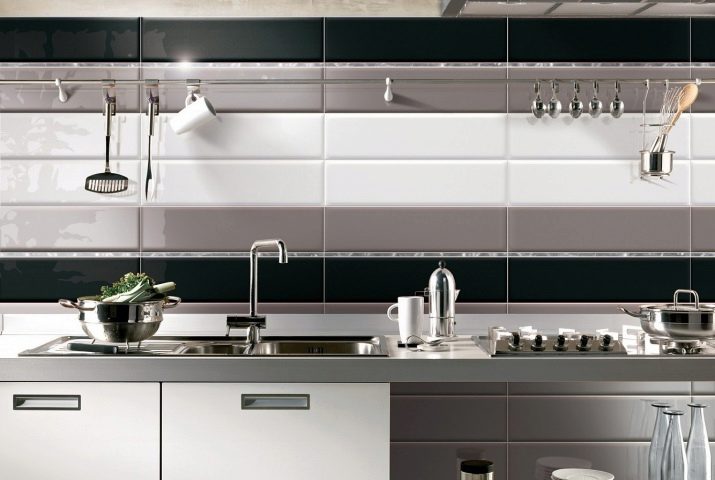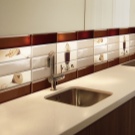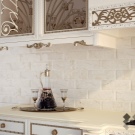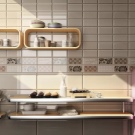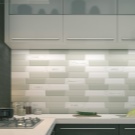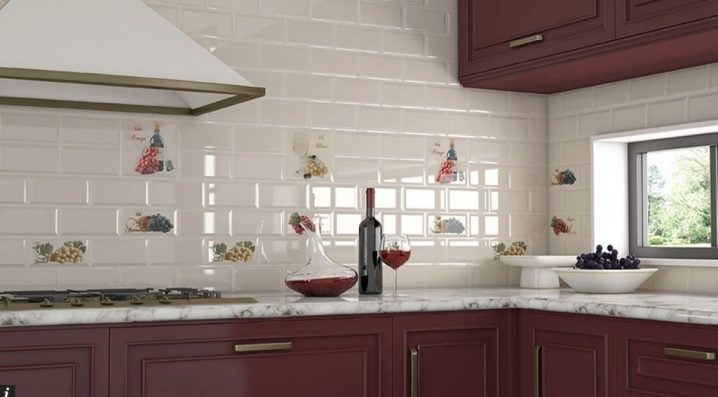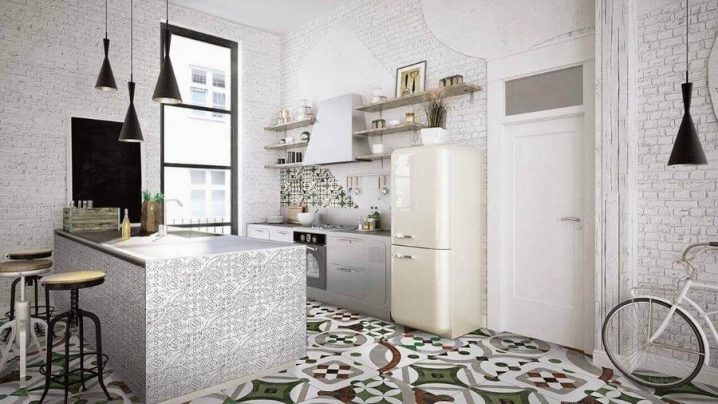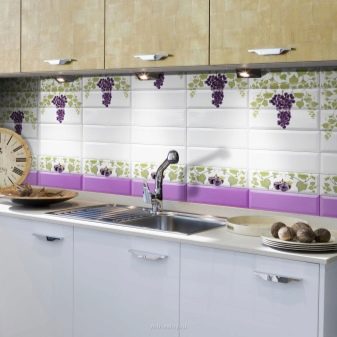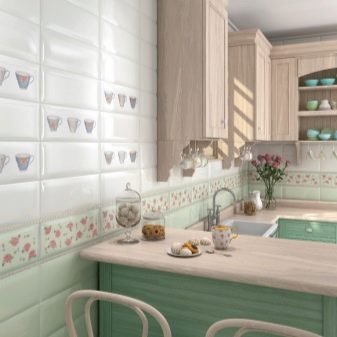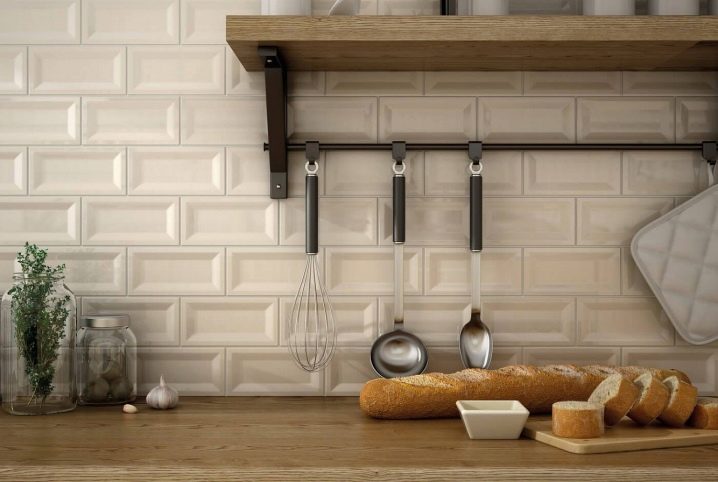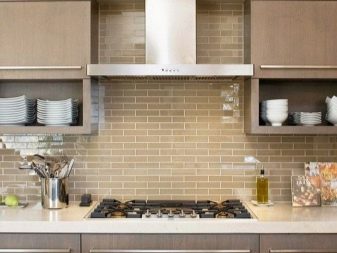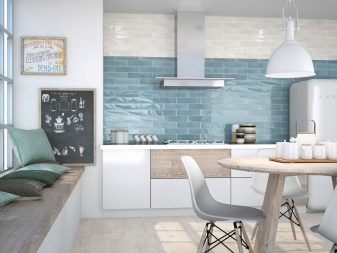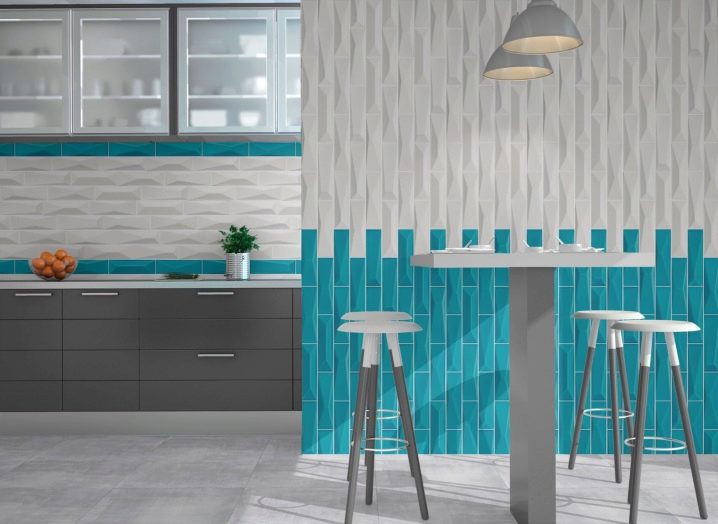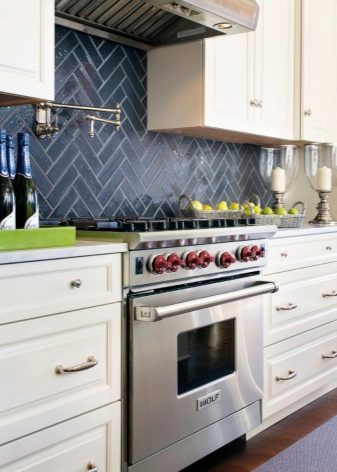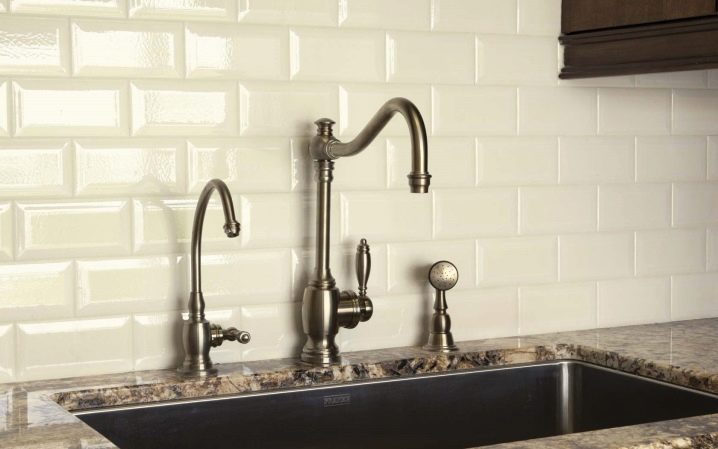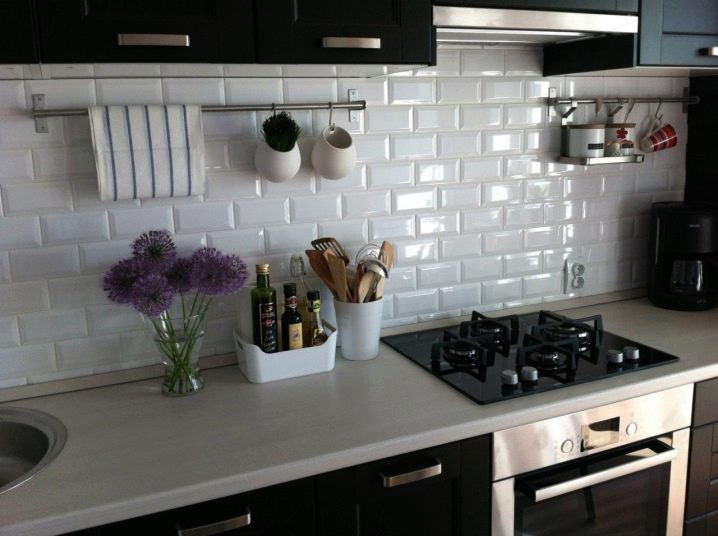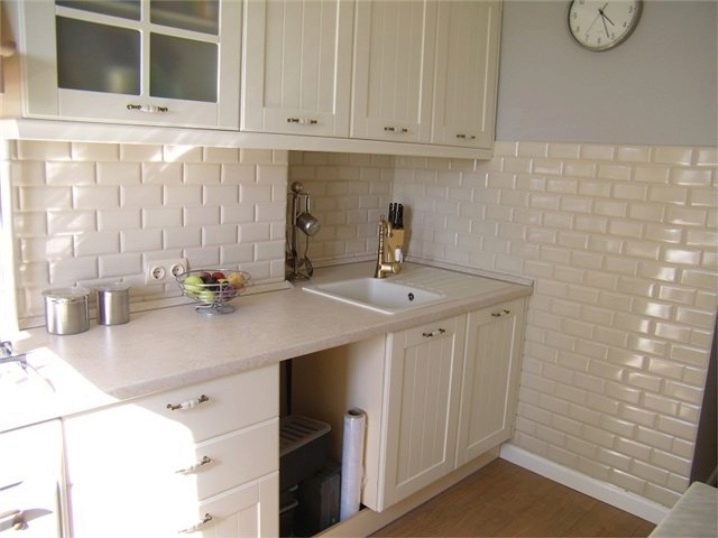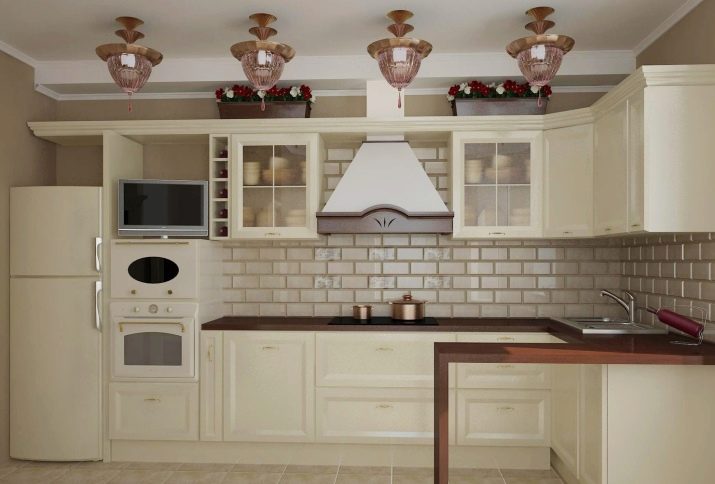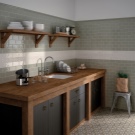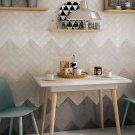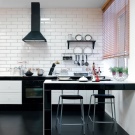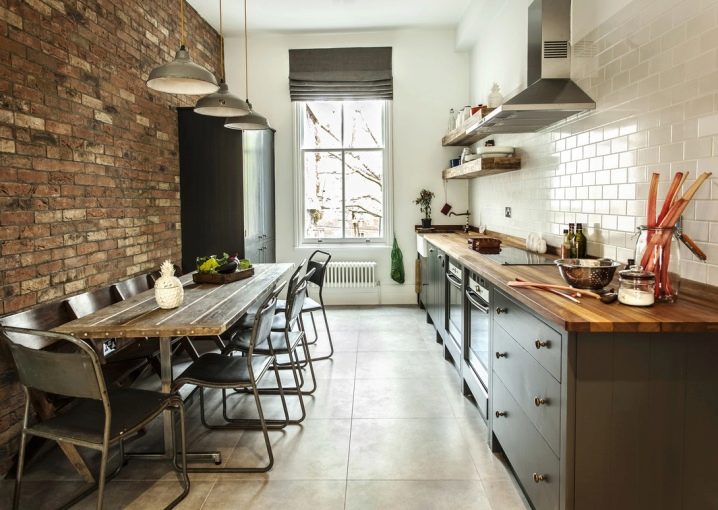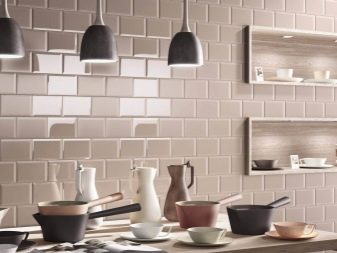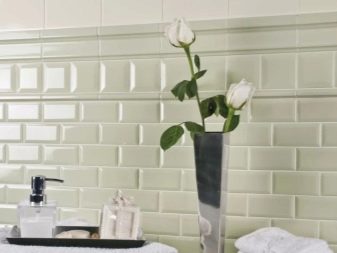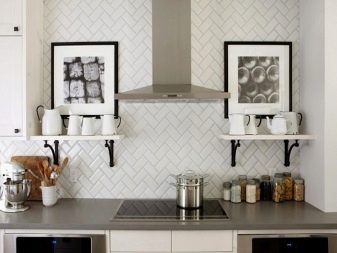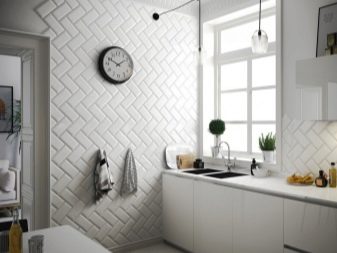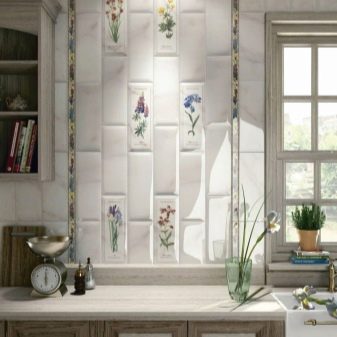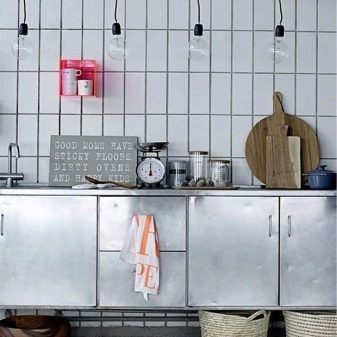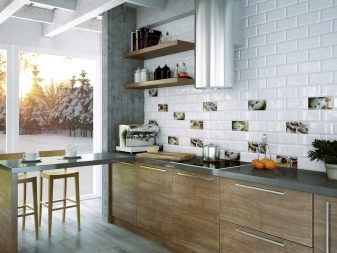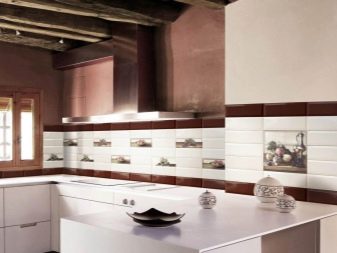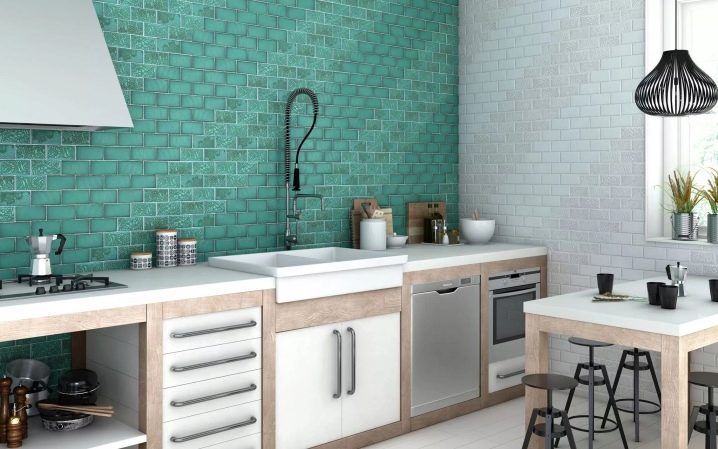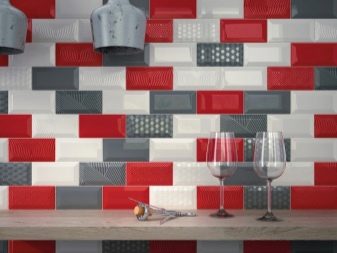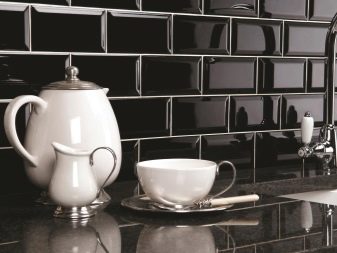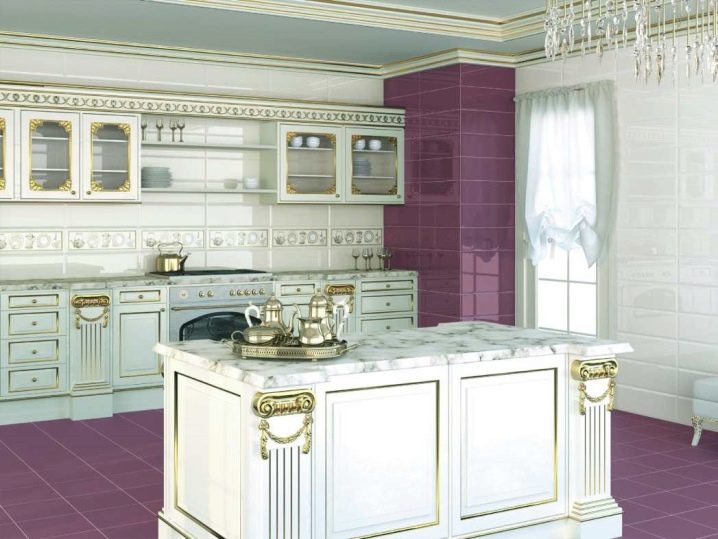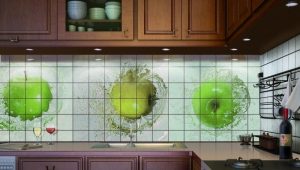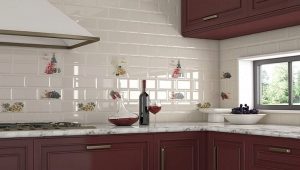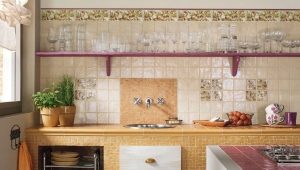Tile for kitchen "hog"
Everyone knows such a type of tile as a facade, facing brick. "Hog" is its modification and is designed for interior and exterior decoration. This type imitates the finishing of facades, but has a slightly different structure. At the ends of such a tile there is a pair of round holes provided by the production technology.
If you look at the side of the tile, it looks like a pig nose, which is why it got such a funny name. Modern designers call "pig" any type of tile, whose dimensions are close to the usual brick.
To create a more original shape, tile trim chamfers around the perimeter. In the market of finishing materials there is a huge range of such products, mostly monophonic. Sometimes it happens that a tile has a pattern or ornament. The most appropriate styles for the “pig” design are industrial, urban-chic, hi-tech, loft, etc.
Special features
Such ceramic tile attracts attention with its design. The non-standard form allows to design the interior of the kitchen in an original way. Unlike tile, “hog” looks more stylish, prestigious, expressive.
Tiles make out mostly kitchen apron, there is also a finish as a floor covering. In this case, it is necessary to purchase products with a thickness greater than for wall coverings. For an apron, you can look at the model with a chamfer, embossed, with a miniature pattern.
Manufacturers can offer a variety of options "hog": with a glossy or matte texture, the effect of vintage wear, and even 3D drawing. Due to its durable structure, the tile perfectly withstands temperature fluctuations, is easy to clean, and is “not afraid” of most detergents with an aggressive composition. The glossy effect of the kitchen apron surface gives the kitchen a visually large area, and the dullness gives intrigue, romantic atmosphere, charm. Most often matte "pig" is used for Provence, Shebbi-Chic, Boho-Chic styles.
An important feature of the “hog” was the ability to mask water stains, greasy splashes, streaks, etc. If you do not have enough time for cleaning, it is better to purchase models in a light color, on which dust is almost invisible.
But the weak point of the "hog" are the seams. If fatset gives the surface a volume and texture, then because of the protruding grooves, it will be more difficult to care for the kitchen apron.
Color solutions
This tile is purchased to imitate brick finishes. Traditional brown, orange, red is very popular. The universal colors for the “pig” are cream, ayvor, sand, white. With such shades you can experiment in any style of the interior and do not miscalculate.
Bright motley colors should be chosen only if your furniture set is neutral. As a rule, Spanish manufacturers present collections of interesting “pig” tiles. The palette is not limited to only pastel, so you can find candy tonality, mint, pearl pink, green, purple and even neon.
The trend of this season in the interior design was the tonality of Tiffany, as well as matte, glossy black. Try to combine a similar color with the smooth facades of the furniture set, its wooden or glass elements.
Interior decoration
To create a stylish kitchen Faroukka most often use a convex "pig" with a chamfer or fatset. The decoration with its help looks modern, decorating the interior in the style of classic, avant-garde, loft. Thanks to the beveled edges, the sunlight is interestingly refracted.
Whatever palette you choose, it will look luxurious in a lighted room. A tile without chamfer will also look great. You can stick a vinyl sticker on it at any time, make a photo print.
The most common type of decorative brick is 7.5 x 15 cm. It is purchased for finishing a kitchen apron. Depending on the size of your kitchen, you can use the finish with a tile length of up to 30 cm and a width of up to 10 cm.
In case you want to save on finishing materials, you can buy ordinary tiles with imitation "hog". It can be large and medium format, have a small groove with a chamfer. This technique will allow you to save money on laying tiles,which will turn out to be installed by hand.
Stylistic decisions
"Hog" fits into the modern style of the interior. In addition to maintaining the atmosphere of a loft, you can use the decoration in the kitchens of country style, classic, rustic or Provence. The similar tile is a favorite variant of furnish for the Scandinavians.
It was they who popularized such a “brick” style in the interiors of houses. Equipping an apartment on the motif of modernity, the “hog” with the effect of gloss and metallic will also be relevant. Appropriate tile will look in the atmosphere of fusion, country, industrial.
Choosing the necessary type of lining before finishing, be sure to orient in the size of the room, colors, type of furniture, the texture of the kitchen facades. In one case, a tile with a matte glaze is suitable, but for a kitchen made of natural wood it is better to use products with the effect of craquelure. Particularly expressive, it will look in the style of vintage, chebbi-chic, because the tile easily imitates small cracks of antique. Selecting this type of decoration is worth it if you want to create retro spirit in the apartment, decorate the kitchen with antiques, you want to set up absolute comfort.
Styling methods
There are several options for laying "hog." Each of them has its advantages and blends harmoniously into the interiors of the kitchens. One of the most common was horizontal application with displacement. When laying it is important to maintain a flat line so that the decor looks neat and concise.
There is also a stack type of installation, bringing to the atmosphere of the interior notes of Scandinavia. Charm gives vertical seams, especially if they are made in a contrasting color than the tile itself.
On the era of 70-80-ies remind laying in the style of "zigzag" or "herringbone." It will dilute the general entourage of the kitchen, it will look nontrivial in any color scheme. It is recommended to install such tile at an angle from 45 to 90 °. For a small kitchen an excellent option would be the diagonal styling of the hog.
But in the spacious Provencal style kitchen is better to mount tiles in a vertical way. In some places it can be decorated with floral patterns (spikelets, sprigs of lavender, berry bunches).
To bring a highlight to the interior, try to dilute the design of the apron with mosaic, photo printing, composition from the panel, as “recommended” by numerous customer reviews.Plain tiles will be the backdrop for a kitchen set, and some bright accents will add a mood to the overall atmosphere.
Application features
First of all, you need to choose the right grout. The ideal solution would be a fugue of the same color as the finish. If you are an adherent of more vivid stylistic trends, such as eclecticism, kitsch, avant-garde, you can select the grout in a contrasting color. Yellow and emerald, soft pink and blue, brown and beige, powdery, orange and burgundy - all this will bring a special charm to the interior, inspire new culinary masterpieces.
Pay attention to the composition and purpose of the selected material. Waterproof grout is always based on epoxy resin. This will facilitate the care of the kitchen apron during wet cleaning. The material is not deformed, does not tarnish, does not lose its neat appearance under the influence of moisture.
It is important to acquire a “hog” with a margin of up to 10%, since a certain amount of tile may be damaged during trimming. Also, there are cases when, in the face of redecorating, it is necessary to replace the slab with the chips with a new one. When finishing work try to pay maximum attention to the seams and joints.
For a convex "hog" you need to stock up with a large amount of glue, because the consumption will be twice as much as on a regular ceramic tile. The optimum thickness of the seam is 2-5 mm. Most of all difficulties can cause facing corners, boxes. That is why it is important to enlist the support of craftsmen who will produce the perfect quality of finishing work.

